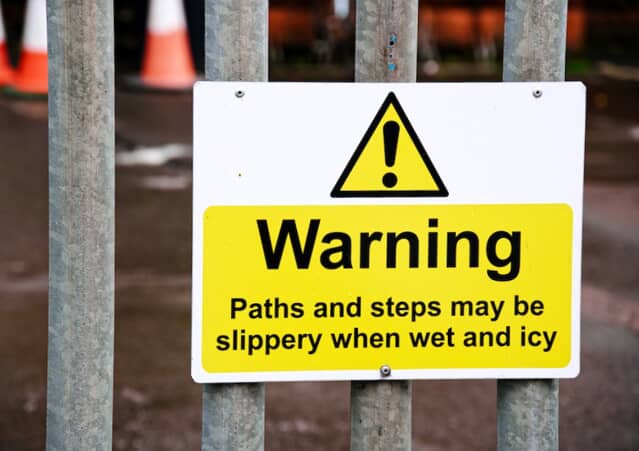
As an employer or site manager, it’s important to spend time making sure your workplace is updated with relevant safety signs and information. More than simply being a practicality, safety signage is a legal requirement within most working environments. They can help reduce accidents and improve workplace safety awareness and legal compliance.
We help businesses of every kind with their safety signs, from schools and medical centres to construction sites and residential buildings. We’ve taken our knowledge and created this quick overview to help you get started with planning safety signs for your site.
What’s the legislation?
Under the Health and Safety (Safety Signs and Signals) Regulations 1996, UK employers and those in control of sites and premises have a responsibility to make sure their site is safely signposted. This involves making sure safety signs are in place and maintained in circumstances where there’s a significant risk to health and safety.
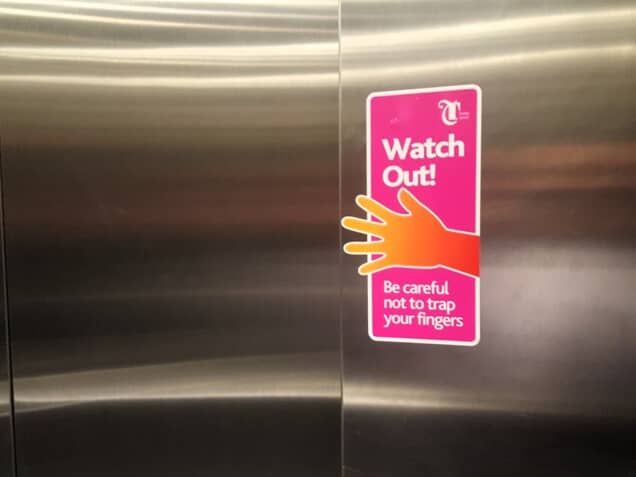
Why are safety signs required?
Safety signs are required wherever something poses a significant risk to health and safety, alerting employees and others to potential risks. In a residential building, there are important fire safety recommendations that should be taken into account.
To determine where safety signs are necessary, site managers firstly need to conduct a thorough risk assessment (made under the Management of Health and Safety at Work Regulations 1999). These assessments are designed to identify hazards and the associated risks, as well as the required measures that need to be taken.
It’s important to note that safety signs are not a substitute for other methods of control i.e. putting controls in place to prevent hazardous situations. Safety signs are only appropriate where their use can further reduce the risk.
What is safety signage?
A safety sign provides information or an instruction about safety or health at work. This could be a prohibition (no access), warning (hazard), direction (fire escape) or mandatory (helmet must be worn) sign displayed next to the relevant risk.

Safety signs placement and application
For your safety signs to be effective, they need to be strategically placed for maximum impact. Here are some key factors to consider:
Height – ideally, signs should be positioned at eye level for the average person (around 6 feet)
Lighting – proper lighting conditions need to be ensured, especially in areas with low light. In some cases, reflective materials or illuminated signs might be necessary
Proximity to hazards – you should place hazard signs close to the hazard they are warning about, but not so close they are obstructed by equipment or materials
Clear line of sight – don’t place signs behind objects or in areas with restricted views
Safety information can be communicated in many different ways, including:
A signboard – printed board depicting words and/or iconography
An illuminated sign – light backed signage box with instructions, directions or warning
A symbol or pictogram – displayed on or nearby the hazard
An acoustic signal – noise or recorded words, signalling a hazard, e.g. fire alarm
What safety signs do I need?
All working environments require some level of safety signage, for instance, fire exit notices. However, some organisations may require a range of signs for multiple purposes.
If you’re a business that operates machinery, you’ll need more safety signs. The results of your risk assessment will provide you with this information and your signage supplier will be able to advise you on the specific signs needed for each instance of risk.
What safety signs do I need?
All working environments require some level of safety signage, for instance, fire exit notices. However, some organisations may require a range of signs for multiple purposes.
If you’re a business that operates machinery, you’ll need more safety signs. The results of your risk assessment will provide you with this information and your signage supplier will be able to advise you on the specific signs needed for each instance of risk.
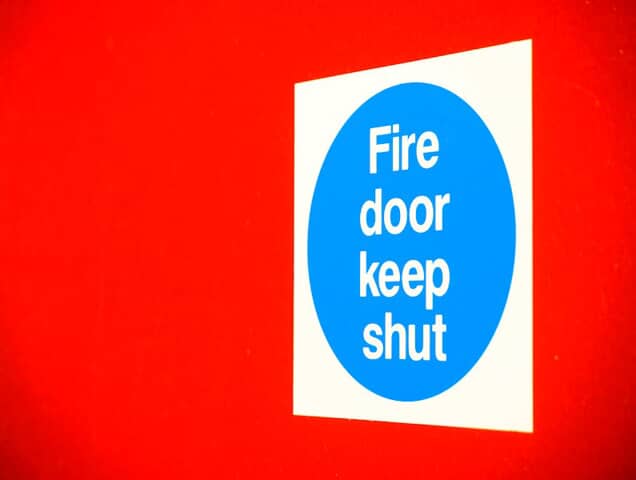
Wayfinding signs in residential buildings
As a response to the Hackitt Review and Grenfell Tower inquiry, the UK government introduced the Fire Safety Regulations 2022. These regulations highlight some important changes that must be applied to multi-occupied residential buildings, including some new recommendations for internal wayfinding signage.
Property owners are responsible for ensuring wayfinding signage at their site is safe, practical and accurate. Some important recommendations from the updated regulations include:
Floor and flat numbers must be clearly marked on landings, stairways and lobbies. They need to be visible both in normal conditions and low lighting or smoky conditions. This is a legal requirement in residential buildings over 11 metres in height.
Text for signs should be on a contrasting background, easily legible and readable in low light or when illuminated with a torch. This assists the Fire and Rescue Service in navigating their way around a building even when visibility is low.
Safety is paramount in residential buildings and adhering to the regulations is essential. We can work with you to produce signage that’s visible in low lighting and keeps your property compliant and safe. Get in touch to find out more.
What should my warning signs look like?
As outlined by the regulation guidelines, there are specific colours associated with warning signs on site. Safety signs come in four different types; prohibition, mandatory, warning and information signs. These are outlined in the table below:
| Colour | Meaning or purpose | Instruction and information |
|---|---|---|
| Red | Prohibition sign Danger alarm | Dangerous behaviour; stop; shutdown; emergency cut out devices; evacuate |
| Yellow / Amber | Warning sign | Be careful; take precautions; examine |
| Blue | Mandatory sign | Specific behaviour or action, e.g. wear protective equipment |
| Green | Emergency escape First aid No danger | Doors; exits; escape routes; equipment and facilities Return to normal |
Signs should be clear and large enough to be seen and understood from the required distance. It’s important to avoid placing too many signs in close proximity, as this can become confusing. Safety signage needs to be made as easy as possible to understand.

How do I know people will understand them?
Most safety signs are self-explanatory. The symbols and colours that are used are universally recognised and have been designed to be easily understood. However, you should never assume this is the case. You need to account for all employees, some of which may be younger or less experienced. Your business may also require some more specific warnings that incorporate less commonly-known signals.
With every employee, it’s a good idea to make sure they’ve been shown all of the safety notices around your site. This will give you the chance to check they understand the meaning of the risk and explain how to act accordingly.
Do I need to maintain my signs?
Yes, it’s the responsibility of employers to make sure their signs are kept in a good condition and are legible at all times. They’re also legally bound to keep their safety signs updated, so it’s important to keep on top of your risk assessments to make sure all potential hazards are effectively labelled.
Here’s how to ensure your signs stay effective:
Cleaning – regularly clean your signs to remove any dirt or dust that might obscure the message
Damage inspection – periodically inspect signs for any damage such as cracks, tears or fading
Replacements – if your signs are damaged, they should be replaced promptly
Up-to-date – Review signage regularly to make sure it reflects any changes in regulations, equipment or workplace procedures
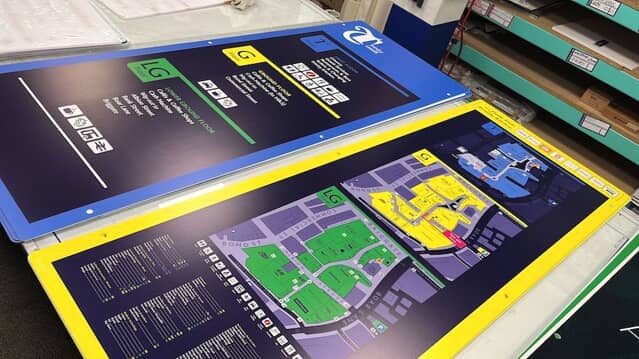
Professional assistance for safety signs
Seeking professional help for your safety signs helps you stay compliant and ensures a safe and informed workplace. At FASTSIGNS Leeds, we can design and install signs with visibility and strategic placement in mind, ensuring your safety messages are communicated effectively. Our expertise will help you create a culture of safety and education in your premises, and can potentially save costs associated with workplace accidents.
Why choose professional help for safety signs:
Tailored solutions – Custom designs that fit your unique needs
Effective communication – Clear, visible signs that convey safety messages
Ongoing support – We can help you maintain and update signs to keep them relevant
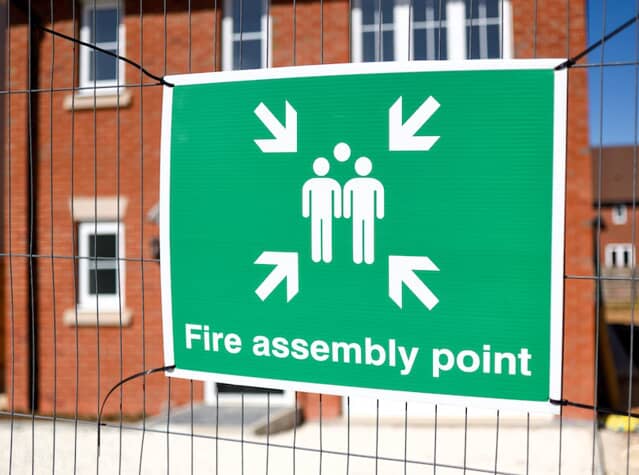
We hope you’ve found this a helpful overview. All of the information within this article was sourced from the document Safety signs and signals, Guidance on Regulations, where you can find further details on safety signage requirements. Please note, the information provided above is an overview and shouldn’t form the basis of your safety signage policies alone.
Do you need safety signs for your site? We can help. Our signage experts carry out site surveys where they assess your space and help you find the best solution for the job. Talk to us today about up-to-date safety signage for your business.